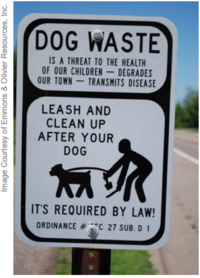
Difference between revisions of "Bacteria in stormwater"
m |
m |
||
| Line 9: | Line 9: | ||
*[[Checklist for bacteria source inventory]] | *[[Checklist for bacteria source inventory]] | ||
*[[Support document for Checklist for bacteria source inventory]] | *[[Support document for Checklist for bacteria source inventory]] | ||
| + | |||
| + | [[Category:Level 2 - Pollutants/Bacteria and pathogens]] | ||
Revision as of 13:55, 26 July 2022
In water quality monitoring, specific disease-producing (pathogenic) organisms are not easily identified. Testing for them is difficult, expensive, and time-consuming. Instead, fecal coliforms and Escherichia coli (E. coli), two closely related bacteria groups, can indicate the presence of pathogens. Fecal coliform and E. coli found in Minnesota rivers and streams may come from human, pet, livestock, and wildlife waste and are more common in heavily populated or farmed areas. Bacteria may reach surface water through malfunctioning or illicit septic system connections, urban stormwater, manure spills or runoff, and more (Minnesota Pollution Control Agency website, accessed January 25, 2018).
Below are links to pages in this manual that address bacteria in stormwater runoff.
